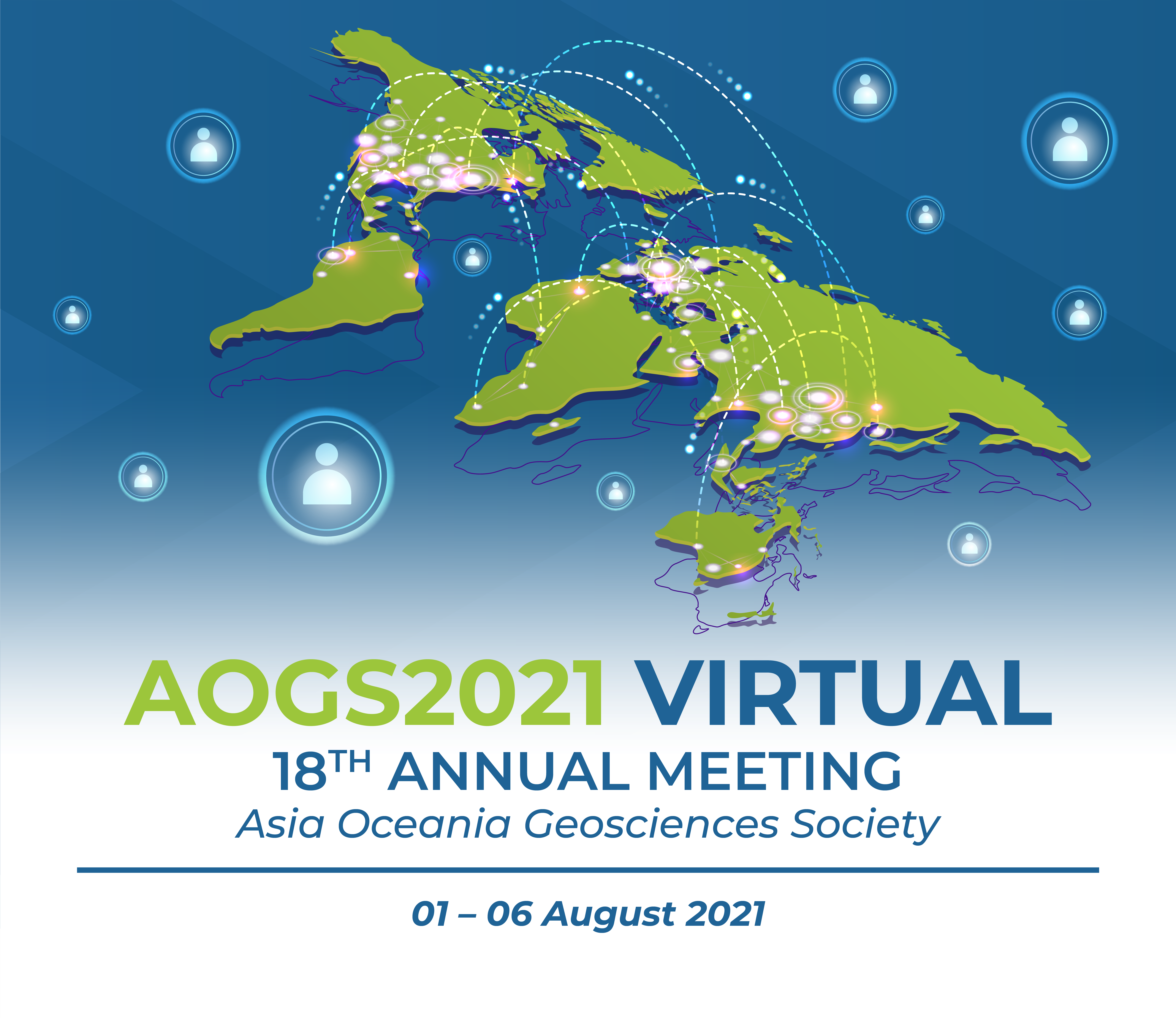

*Attend these AOGS2021 Webinars Free! – Registered Attendees Only
All AOGS e-news subscribers are eligible to attend. Please help us forward this information to your friends and
professional contacts. If not yet a subscriber, they need sign up for an account on MARS to receive
the complimentary invite. Not yet a subscriber?
Sign up Here to Receive Your Complimentary Invitation
Axford Lectures | Medal Lectures | Section Distinguished Lectures
All times shown are Singapore Standard Time (GMT+8)
| OS Section Lectures & Meeting | Room: WB2 |
| Transition | 13:00– 13:30 |
| OS Distinguished Lecture | 13:30 – 14:15 |
| OS Kamide Lecture | 14:15 – 15:00 |
| OS Section Meeting | 15:00 – 16:00 |

Thu-05 Aug, 13:00 – 16:00, Room: WB2
Kamide Lecture - OS (Save a seat)
“Processes of ocean response to tropical cyclones”
Han ZHANG
Second Institute of Oceanography, Ministry of Natural Resources
Tropical cyclone (TC) is a strong natural hazard that generates and develops on ocean, which usually causes property and human losses when making landfall. Warm ocean surface provides energy for the tropical cyclone development, and the developed tropical cyclone gains more energy from ocean, which is called TC-ocean positive feedback. However, TC does not develop infinitely because ocean surface cools during a TC, and the cooled ocean surface prohibits TC development, which is called TC-ocean negative feedback. Thus, understanding the TC-ocean interaction is not only important for the variation of local ocean environment but also for the predication of TC itself.
The strong TC wind speeds up the surface ocean mixed layer current, the convergence and divergence of mixed layer current caused upwelling and downwelling, as well as the current response under mixed layer. The structure of current response to a tropical cyclone depends on the TC translation speed, size, intensity and environmental factors such ocean stratification and topography. There is near-inertial current response that biased to the right (left) side of TC track in the Northern Hemisphere if the tropical cyclone moves fast enough, which is usually observed by buoys and moorings. The near-inertial current propagates downward, which increases the kinetic energy in the internal ocean. Current response can also reach ocean bottom, while the bottom response influences the sediment transport and bottom dissipation.
Tropical cyclones also modulate the ocean temperature structure. TC usually intensifies ocean mixing and deepens surface mixed layer. In so doing, it creates a cold anomaly at the ocean surface and a warm anomaly in the subsurface that biased to the right (left) side of TC track in the Northern Hemisphere, which can be considered as a downward pump of heat (heat pump). However, because tropical cyclone also arouses upwelling near its track, which shallows the mixed layer and increases the entrainment efficiency at mixed layer bottom, then cools the upper ocean (cold suction). The cold suction effect devours the subsurface warm anomaly caused by heat pump effect, modulates the warm anomaly into deeper ocean. Note that air-sea heat flux is not important (plays some role) during the forced stage of strong (weak) tropical cyclones. In relaxation stage, air-sea heat flux recovers surface temperature anomaly but the subsurface and inner ocean temperature anomaly retains. The upper ocean heat change caused by tropical cyclones is not only important for the local heat uptake, but also contributes to global meridional heat transport.
Processes of upper ocean salinity response to a tropical cyclone is similar to temperature response, except that surface fresh water flux (precipitation and evaporation) changes the ocean salinity in mixed layer. TCs also influence the upper ocean biological and ecological processes, as the TC-induced mixing and upwelling bring subsurface nutrients and into surface, then usually result in phytoplankton bloom and primary production increase.
Biography
Han Zhang is associate researcher in the Second Institute of Oceanography, Ministry of Natural Resources. He earned a bachelor degree of atmospheric sciences from Lanzhou University, master degree of physical oceanography from the South China Sea Institute of Oceanology, Chinese Academy of Sciences, and PhD degree of physical oceanography from Xiamen University.
Han Zhang mainly studies the air-sea interactions during tropical cyclones. Based on observation, numerical modelling and theoretical analysis, he studied the upper ocean thermal and dynamical response to a tropical cyclone or sequential tropical cyclones. He revealed the processes of upper ocean temperature response to a tropical cyclone, showed the relative importance of mixing (heat pump effect) and upwelling (cold suction effect) on the upper ocean temperature structure, uncovered the current response patterns to a tropical cyclone under different tropical cyclone and ocean conditions. He also studied the influence of a tropical cyclone on the dissipation near ocean bottom. Besides, Han Zhang studied the variations of tropical cyclones in the past decades, revealed the global impact of tropical cyclones on ocean, and the characteristics of tropical cyclones that made landfall over China.